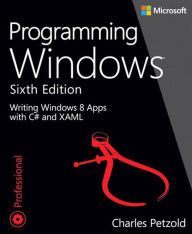Suzanne Robertson and James Robertson have, over many years, helped hundreds of companies improve their requirements techniques and move into the fast lane of system development. Their courses and seminars on requirements, analysis, and design are widely praised for their innovative approach. The Robertsons are London-based principals of The Atlantic Systems Guild, an international consultancy specializing in the human dimensions of complex system building. They are also the coauthors of Mastering the Requirements Process, Third Edition (Addison-Wesley, 2012), and are the developers of the Volere requirements techniques.
Complete Systems Analysis: The Workbook, the Textbook, the Answers
eBook
-
ISBN-13:
9780133492293
- Publisher: Pearson Education
- Publication date: 07/15/2013
- Series: Unterrichtsmodelle Deutsch
- Sold by: Barnes & Noble
- Format: eBook
- Pages: 624
- File size: 24 MB
- Note: This product may take a few minutes to download.
Available on NOOK devices and apps
Want a NOOK? Explore Now
This is the digital version of the printed book (Copyright © 1998, 1994).
In a fundamentally new approach, Complete Systems Analysis teaches everything you need to know about analyzing systems: the methods, the models, the techniques, and more.
A definitive text on modern systems analysis techniques is combined with an extensive case study to give readers hands-on experience in completing an actual analysis project.
Readers proceed through each step of a full-scale analysis project, analyzing the complex requirements of a television station’s airtime programming department. Each phase of the case study and each exercise in the textbook section is thoroughly explained in separate review and answer sections.
An innovative Trail Guide system–inspired by the difficulty levels marked on ski trails–encourages readers to follow a sequence that suits their skill level. Beginners follow the full trail while experienced analysts fill in gaps in their training, refresh their understanding of key concepts, and practice their skills. Managers review key concepts but can skip the detailed work with models.
The book shows how analysis is used for object-oriented implementation, and how event-response data flow models and entity-relationship data models are complementary, not competing, models.
Complete Systems Analysis adapts to the reader’s needs and provides an appropriate learning path for the beginner, with a more direct route for experienced analysts wanting to make better use of today’s techniques. Since its initial publication in 1994 as a two-volume set in hardcover, this highly acclaimed text–released in 1998 as a single, softcover volume–has served as a course text in classes throughout the world.
Topics include
- Analysis Models
- Data Flow Diagrams
- Data Viewpoint
- Data Models
- Leveled Data Flow Diagrams
- Current Physical Viewpoint
- Building the Data Dictionary
- Strategy: Focusing on the Essentials
- Identifying Events
- Modeling an Event Response
- Writing Mini Specifications
- CRUD Check
- Modeling New Requirements
- New Physical Viewpoint
- Object-Oriented Viewpoint
- Strategy: Toward Implementation
Customers Who Bought This Item Also Bought
-
- The Process of Software…
- by Peter EelesPeter Cripps
-
- Lean Software Development: An…
- by Mary PoppendieckTom Poppendieck
-
- Lean-Agile Software…
- by Alan ShallowayGuy BeaverJames R. Trott
-
- Writing Effective Use Cases
- by Alistair Cockburn
-
- Requirements by Collaboration:…
- by Ellen Gottesdiener
-
- Mind Tools: The Five Levels of…
- by Rudy Rucker
-
- PhoneGap Essentials: Building…
- by John M. Wargo
-
- Five Core Metrics: The…
- by Lawrence PutnamWare Myers
-
- CCENT ICND1 100-101 Flash…
- by Eric Rivard
-
- IT Architectures and…
- by Chris BrittonPeter Bye
-
- Learning Android Application…
- by James TalbotJustin McLean
-
- iOS 7 Application Development…
- by John Ray
-
- Malware Protection and Removal
- by Lou Diamond
-
- Algorithms: Algorithms_4
- by Robert SedgewickKevin Wayne
-
- Programming Windows
- by Charles Petzold
-
- Microsoft Visual Studio 2012…
- by Mike SnellLars Powers
-
- Creating a Software…
- by Karl Wiegers
-
- My Social Media for Seniors
- by Michael Miller






















